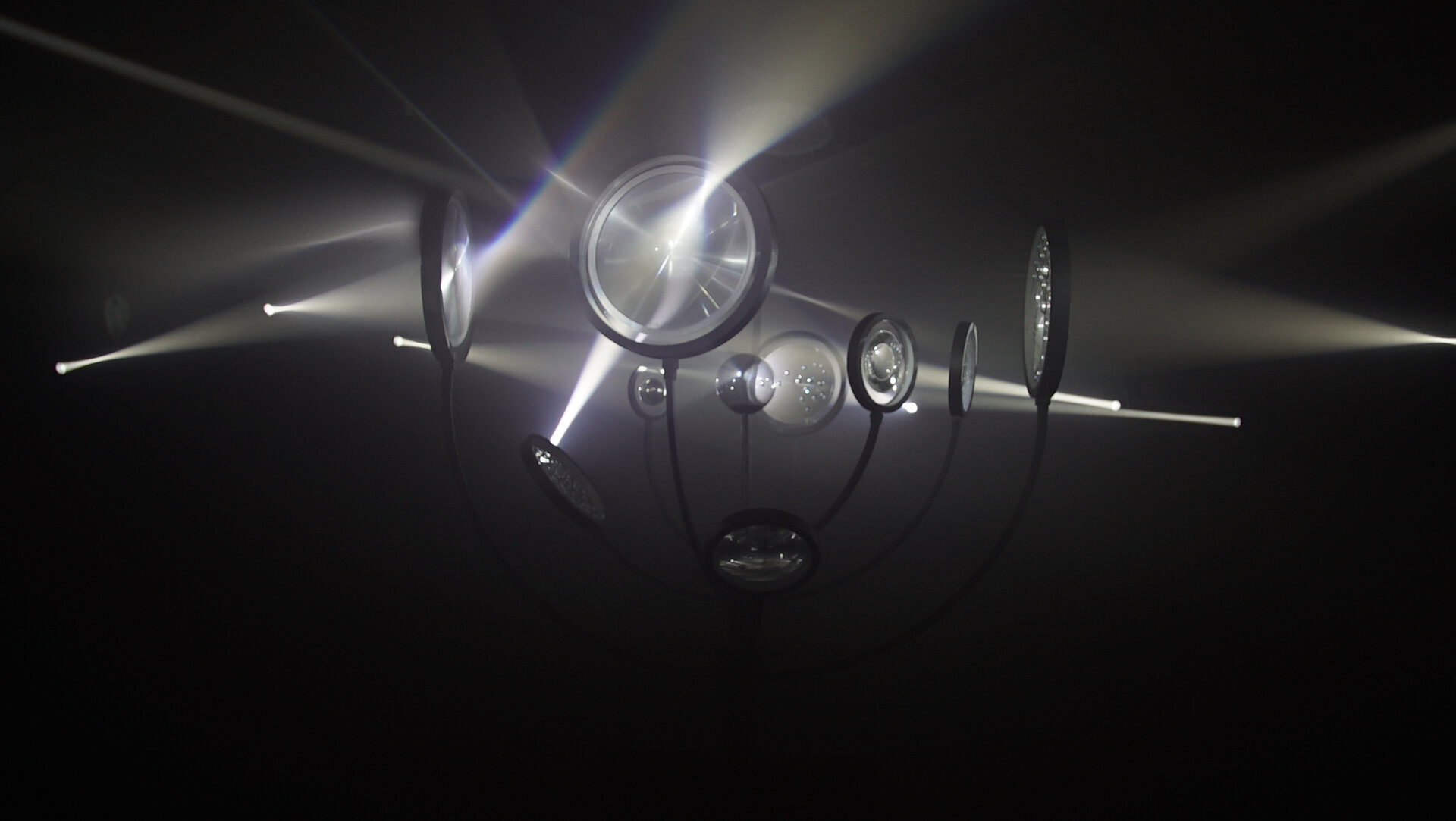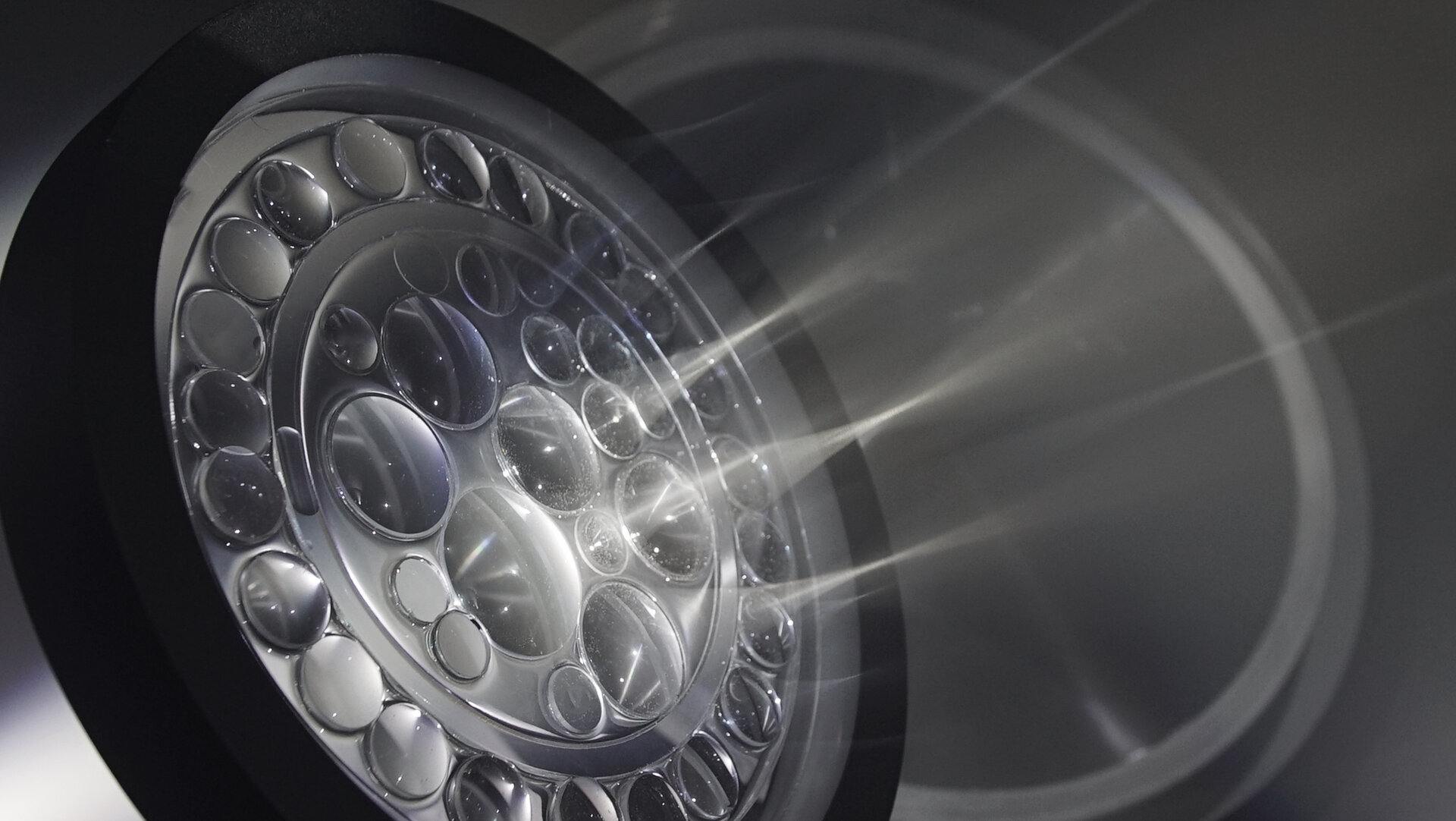At the Science Gallery of Trinity College Dublin, a beautiful work of art is capturing the imagination of people all over the world. It’s called “Dark Distortions,” a work of interactive art by Dutch artist Thijs Biersteker of Woven Studio. Inspired by the ESA’s forthcoming Euclid mission, a visible to near-infrared space telescope that will launch sometime in 2022 to study the mysterious nature of Dark Matter.
Dark matter, first postulated in the 1960s, is a mysterious mass that is theorized to make up 85% of the Universe (according to current cosmological models). Astrophysicists first speculated about the existence of this mass based on their observations of large-scale structures in the Universe, which appeared to be far more massive based on their gravitational influence they exerted on the space around them.
To this day, scientists have still not found any direct evidence of Dark Matter, which appears to interact with normal matter only through gravity (and not electromagnetic forces). However, its influence can be observed by studying how the path of light bends in its presence, especially where large concentrations surrounding galaxies are concerned – aka. “Dark Matter Halos.”
Inspired by the mystery Dark Matter presents, Thijs Biersteker partnered with the ESA and Leiden University in the Netherlands to create a dynamic art installation. Biersteker is renowned for combining scientific research and new technologies to create interactive artwork (sometimes called eco- or awareness art) that address the world’s most pressing issues – i.e. climate change, air pollution, ocean plastic, data misuse, etc.
In the case of “Dark Distortions,” the installation consists of a constellation of moving lenses that bend light the way massive concentrations of dark matter do. The arrangement of lenses, which are in layers of lenses on lenses, represents the way in which astronomers theorize dark matter accumulates, in fractal-like patterns (in endlessly repeating patterns across large scales). As Biersteker described it in an ESA press release:
“The work uncovers the unseeable nature of dark matter in front of your eyes. It shows how magical and powerful it is when art and science come together. Visitors experience how big scientific discoveries can be beautifully complex and simple at the same time.”
Dark Distortions is also a fitting example with Biersteker’s approach, which is described as a “fluid mixture of data, nature, kinetic motion, digital visualizations and analog elements, the virtual and real worlds.” “Told in a techno-poet way, the artwork pays homage to how cutting-edge science can reveal the unseen,” Biersteker added. “In the artwork, art and science come together in a magical and compelling way.”

Another key contributor who helped inspire the work is Henk Hoekstra, a professor of observational cosmology at Leiden University who is also the cosmology coordinator of the Euclid mission. When it launches in 2022, this mission will rely on a suite of instruments, which will include a state-of-the-art 1.2 m (~4 ft) Silicon Carbide (SiC) mirror telescope, a visible imager, a near-infrared photometer, and a slitless spectrograph.
These will allow Euclid to probe the expansion history of the Universe in order to determine why it’s happening at an accelerating rate. Astronomers are currently divided over whether it’s another mysterious unseen force (Dark Energy) or some modified form of General Relativity. At the same time, the mission will study the evolution of cosmic structures (like galaxies and galaxy clusters) to determine the role of dark matter.
This will be cone by measuring how their shapes have been modified by the bending or magnification of light (gravitational lensing) caused by the presence of dark matter halos. These two phenomena – Dark Matter and Dark Energy – are the greatest cosmological mysteries scientists face today. In this respect, “Dark Distortions” draws viewers into a realm of astronomy that is inseparable from existence itself. Said Hoekstra:
“Cosmologists have a model of the universe that is very abstract – the concept of dark matter is very different to how humans actually experience the world. This installation envisages the invisible. It takes the abstraction and connects it to our human experience.”

“Dark Distortions” is part of a free exhibition hosted by the Science Gallery at Trinity College Dublin titled “Invisible,” which features events and exhibits that highlight how science, art and philosophy imagine the unseen and invisible parts of existence – in this case, Dark Matter and Dark Energy, which make up roughly 95% of the Universe’s mass-energy density.
The exhibition draws on the latest research from King’s College London, and was originally titled DARK MATTER when it was hosted by the Science Gallery of Trinity College London. Invisible was scheduled to run from March 13th to May 31st. Unfortunately, the gallery was forced to close its doors to visitors temporarily due to public health concerns associated with the COVID-19 pandemic.
However, images and videos of the artwork are still available online and the gallery has extended the Invisible exhibition until October 25th. To learn more, or to book a free timed ticket for the Invisible exhibition, check out the Science Gallery Dublin website.

